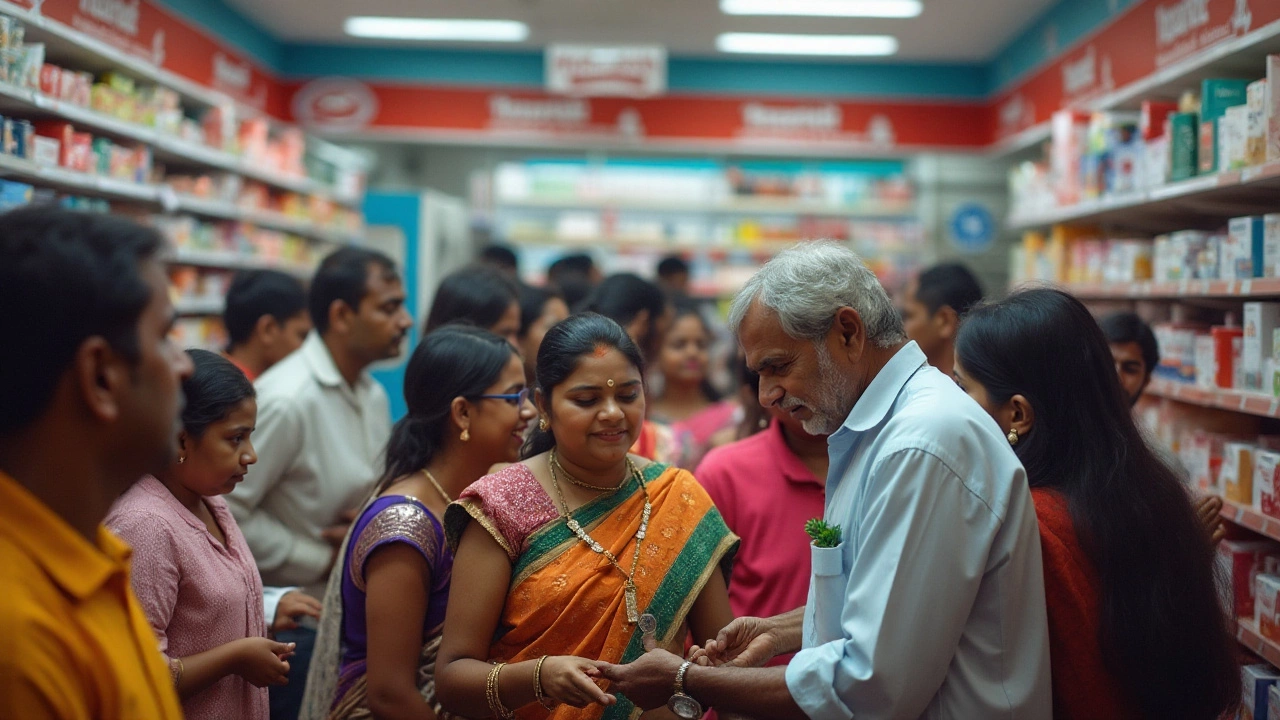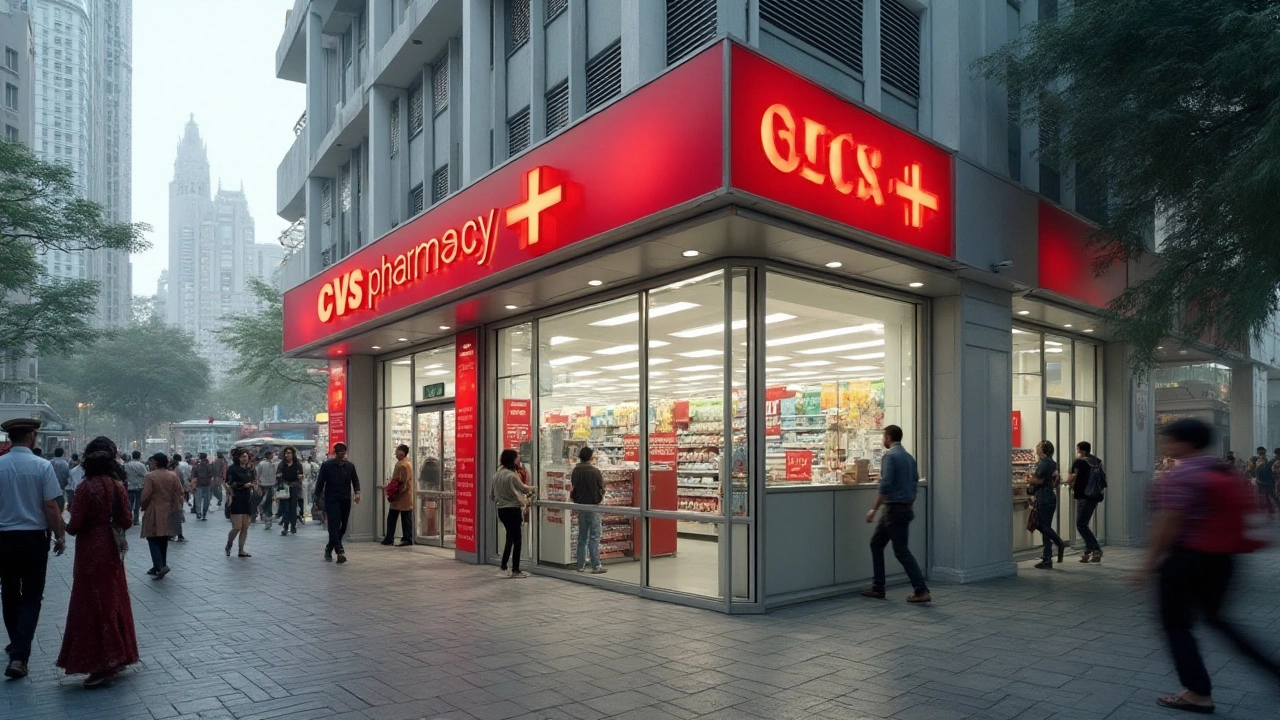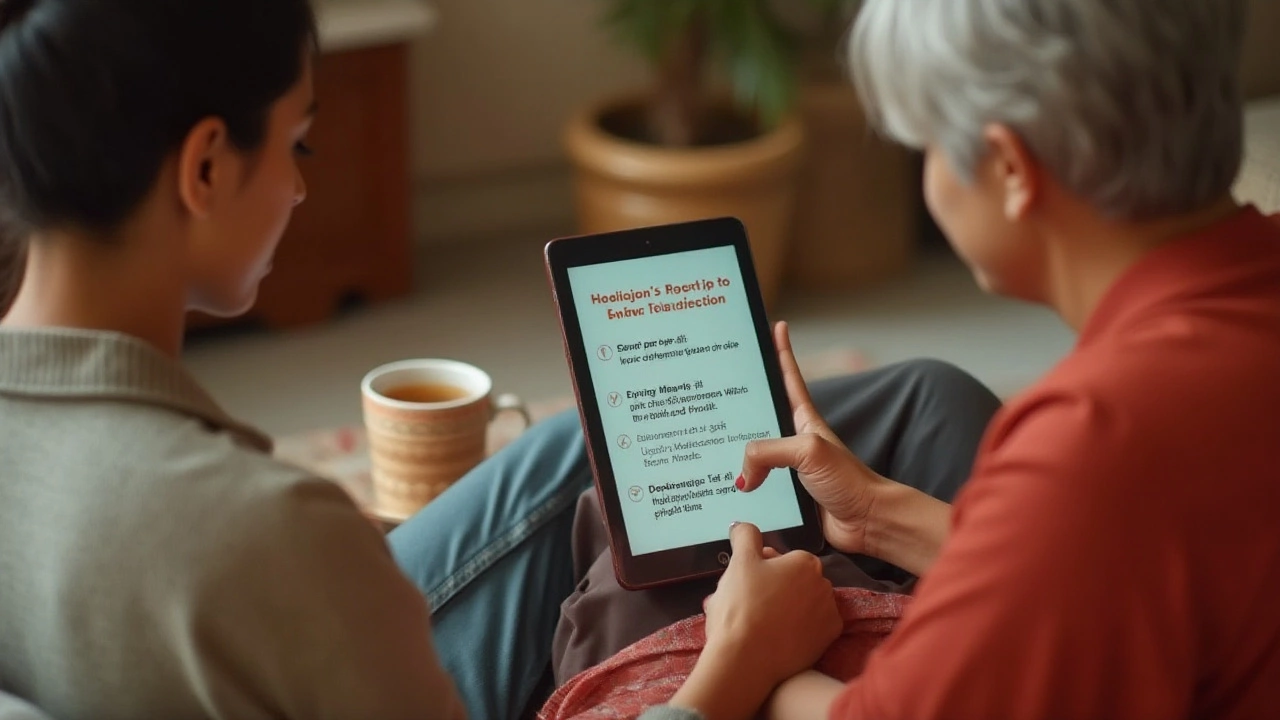-
1

Unveiling the High Costs of CVS Pharmacy: An In-depth Analysis
The convenience of grabbing your prescription from CVS might be overshadowed by the pinch you feel at the register. You've probably asked yourself, why does everything seem pricier here? You're not alone. As we step into 2025, let's take a moment to unravel the nuanced layers contributing to the high costs of CVS Pharmacy.
From the moment you hand over your prescription, various factors are at play. It begins with the operational costs that CVS incurs; from maintaining a vast network of locations to ensuring a streamlined and efficient online service. Insurance factors often add another layer of complexity and sometimes, confusion for many consumers. But it's not just about business logistics.
There's a psychological component too. CVS's strong brand presence plays a part in consumer willingness to pay more, thanks to its reputation for reliability and convenience. Yet, amidst these costs, there are tactics to help manage your expenses better. With a bit of digging and understanding, you can find ways to make your prescriptions more affordable, even within CVS's aisles.
- Understanding CVS's Pricing Structure
- The Role of Insurance and Licensing Fees
- Brand Recognition and Consumer Perception
- Strategies for Affordable Medication Purchases
Understanding CVS's Pricing Structure
Many folks ponder why CVS charges what it does for medication. To get to the heart of this, it's important to look at various elements that build up the cost. One primary aspect is the complex chain of supply that supports CVS pharmacies. From manufacturers to the eventual placement on CVS shelves, every drug endures a journey. Each stage, including logistics and distribution, adds layers of cost. Speak to anyone involved in the pharmaceutical supply chain, and they'll assure you that getting drugs to market is no straightforward task.
Beyond this, we have the infrastructural machine that is CVS itself. Thousands of locations mean expenses tied to real estate, not to mention staffing. These are expenses other online pharmacies may not have. When thinking of real estate, imagine the leasing costs in prime locations across the country, adding a significant figure to the pricing equation. For CVS, the sheer scale of maintaining such a massive operative sphere also requires modern technology investment to ensure efficiency and security for both staff and customers, which translates into the pricing structure.
Then we step into the realm of compliance and insurance. Every pharmacy needs to adhere to stringent regulations and maintain licensing, which can be pricey. The costs arising from ensuring every branch is compliant with health and safety regulations are immense. Being a trusted national brand, CVS also prides itself on accountability and transparency, further driving costs to conform to brand standards. According to Pharmacy Times, "The costs incurred by pharmacies to remain compliant are unavoidable aspects that pharmacies, especially larger networks like CVS, must incorporate into their financial models."
A glance at typical profit margins, and one might assume CVS is raking it in. Yet, hidden costs such as those mentioned can whittle down profitability. This is not to say that margins aren't healthy; however, they do ingrain the idea that a good chunk of what you're paying isn't pure profit. Rather, it's an amalgam of operating and compliance costs. Now, let’s add the flavor of economics here. When demand swings or production hiccups happen, pharmacy chains like CVS may face sudden shifts in acquisition costs. These costs will sometimes reflect in the consumer price, not out of mere profit motivation but necessity.
As we tread deeper, consider the positioning of CVS in terms of brand value. CVS has the advantage of a reputable brand known nationwide, and such a distinction often allows for prices that reflect this trusted status. The consumer ideally understands they are investing money not only into the physical product but the reliability and security of a well-established company. An interesting survey conducted in 2023 revealed that 65% of CVS customers were willing to pay a premium solely due to brand reliability. This brand assurance meant peace of mind, an intangible cost that CVS smartly embeds into its pricing logic.
This brings us to the web of insurance companies and their role in pricing. Insurances often negotiate directly with pharmacy chains, and CVS being a juggernaut in the field, navigates countless contracts. Depending on your insurance plan, your experiences at CVS’s checkout counter could vary significantly. This variability in consumer experience might lead some to perceive CVS as 'expensive' without seeing the underlying negotiated terms setting these prices. For many, this complex dance between CVS and insurance firms remains an obscured mystery.
Thus, the pricing structure of CVS is a tapestry woven from many threads, each with its own cost and value. Knowing this, while planning your pharmacy visits, remember that you are not just paying for the medicine itself but the extensive network and expertise that brings it to you. While the price tag seems hefty, numerous facets justify the amount you're asked to part with—a nuanced perspective that is important for consumers to appreciate.

The Role of Insurance and Licensing Fees
When considering the various components that dictate the pricing of prescriptions at CVS pharmacy, it's crucial to delve into how insurance and licensing fees impact the final tally. For many, insurance is a complex, often frustrating subject that plays an outsized role in medication costs. The intertwining of insurance plans, co-pays, deductibles, and out-of-pocket maximums can often leave customers feeling overwhelmed. At CVS, the process is no different, as they work closely with insurers to navigate these nuances, often leading to variations in what consumers pay for the same prescriptions.
Insurance companies and pharmacies engage in contracts where they negotiate on medication prices, sometimes resulting in significant savings for consumers, but at times creating higher out-of-pocket expenses than anticipated. This push and pull occur in a landscape governed by pharmacy benefit managers (PBMs), intermediaries who influence which drugs pharmacies stock and their costs. With PBMs leasing their focus to specific brands and formulations, it sometimes results in higher prices for consumers who find their preferred medications designated as non-preferred.
Of course, another layer of complexity comes from licensing fees, a necessary but sometimes burdensome cost that pharmacies like CVS must absorb. Each state imposes various licensing requirements to ensure safety and compliance in drug dispensing. These regulatory costs, while essential for maintaining health standards, can indirectly trickle down to affect the cost of drugs at the consumer level. The administrative load associated with keeping up-to-date with constantly evolving regulations and compliance requirements can sometimes inflate the operating costs for a pharmacy.
“Insurance coverage for prescription drugs isn’t just a matter of financial planning; it’s part of the larger healthcare dialogue in the U.S. It fluctuates with policy changes, and this unpredictability can often translate to pharmacy pricing variance,” notes health policy expert, Dr. Michael Gerson.
A visible impact on prices can be observed when insurance policies shift, adding complexities to what may be covered more restrictively than before. Let’s not forget that beyond mere pricing, insurance policies play a pivotal role in enhancing or limiting accessibility to drugs, affecting consumer experiences at the pharmacy counter. In addition, licensing and insurance intricacies are like invisible hands, silently impacting the straightforward act of getting medicine, and each CVS outlet must account for the regional differences in regulatory requirements. While some might see insurance as a safety net cushioning the market’s volatility, it often positions itself as a harbinger of unexpected fiscal surprises.
However, patients can acclimate to these challenges. Understanding your own insurance's formulary—the list of drugs covered by your insurance provider—or engaging in programs that CVS offers to ease costs can mitigate some financial burdens. By staying informed, customers can better navigate CVS's pricing landscape, sometimes finding generics or alternative medications that fit within their budget constraints without relinquishing quality. And thus, a balance can be struck between the necessity for both the pharmacy and the insurer to turn a profit and the consumer's need for affordable care.

Brand Recognition and Consumer Perception
It's easy to understand why a store like CVS is held in high regard by countless consumers across the nation. With its unmistakable red logo and signature white pharmacy aisle, CVS has become synonymous with accessibility and reliability. In an era where a reliable source for health-related purchases is scarce, such brand recognition gives CVS a significant competitive edge. The sheer presence of a CVS outlet at almost every other corner underscores its ingrained presence in everyday American life. This omnipresence often translates into a consumer perception that CVS is not only convenient but that the quality of its products and services justifies its price. This perception plays into our buying habits more than we might realize.
CVS’s strong brand presence means that when consumers make a purchase, they inherently perceive an assurance of quality and trust. According to a study by the American Marketing Association, brands recognized broadly for quality often charge up to 10-20% more for their services without affecting their customer base. The belief in the CVS promise allows it to maintain higher prices because consumers equate them with the delightful convenience of having everything they need in a reliable location. For many, waiting days for online prescriptions or risking an unknown brand’s efficacy isn’t worth the savings.
"People are willing to pay more for peace of mind," says Dr. Jonathan Spader, a consumer behavior specialist. "When you see a brand almost everywhere, you begin to think it’s the safest bet."
Let's delve deeper into how CVS leverages this advantage. It often tops surveys when it comes to brand loyalty in the pharmaceutical sector. This is because CVS does more than just sell products — it sells a promise of ease, reinforced by knowledgeable staff and a seamless transition between browsing, purchasing, and picking up essential medicines. Moreover, there's a psychological angle linked to familiarity, where comfort with a brand leads to less price sensitivity. This is backed by numerous marketing studies proving that brand familiarity often leads to repeated purchasing patterns, and CVS seems to have mastered this art. Whether it's a tube of toothpaste or a life-saving prescription pill, people have developed a default preference for CVS amidst a bustling marketplace.
The cost of maintaining such a widespread and recognizable presence is not negligible. Indeed, maintaining stores in prime locations has its financial burdens, but CVS uses these as investments in their brand image. Their strategic placement in urban and suburban areas ensures that they're always part of the daily commute or a weekend errand list. A visit to CVS seamlessly integrates into your lifestyle, making costs seem like an afterthought compared to the time saved and the immediate gratification of having what you need. When weighed against potential savings from smaller or lesser-known pharmacies, many consumers find themselves justifying the prices with, "But it’s CVS."

Strategies for Affordable Medication Purchases
Confronted by the seemingly unyielding prices at CVS pharmacy, many of us find ourselves questioning the sustainability of our prescription habits. However, rest assured that practical solutions do exist; strategies that, with a bit of dedication, can bring substantial relief to your wallet. The first step on this cost-saving path involves leveraging generics. Generic medications contain the same active ingredients and provide the same therapeutic benefits as their branded counterparts but are available at a fraction of the cost. Switching to generics can lead to savings of up to 85% on your prescriptions, a considerable financial breather. Calling your doctor to see if a generic version is available might seem like a small task, but it holds the potential for significant savings over time. Many doctors are supportive of this switch when it benefits their patients' financial health.
An often-overlooked tactic is price comparison across pharmacies both in-store and online. Though CVS is ubiquitous and reliable, local pharmacies or alternative online pharmacies may offer the same medicine at a reduced price. Websites like GoodRx provide a clear comparison of drug prices, allowing you to choose the option that meets your budget. Simply presenting a GoodRx coupon or card at the pharmacy can prompt a surprising reduction in cost. This market transparency empowers consumers like never before, ensuring you’re not overspending. Such proactive steps protect your financial resources without compromising health.
Insurance plays a significant role in the cost equation as well. It's crucial to understand what your plan covers and shop around during open enrollment periods to find a plan that fits your needs. Contact your insurance provider for a formulary list that outlines which drugs have lower co-pays. Sometimes, slight adjustments to your medication list, under the guidance of your healthcare provider, can align better with insurance coverage — saving you money. According to a survey conducted by the Kaiser Family Foundation, approximately 30% of adults reported not taking their medicines as prescribed at some point in the past year due to costs. This alarming figure shows the need to actively engage with your insurance options.
Lastly, loyalty programs and discount cards offered by pharmacies could also tip the scales in your favor. Signing up for a CVS loyalty card and regularly checking for promotional discounts can lower your medication expenses. These programs are designed to reward consistent customers, often providing points that translate into discounts. Don't shy away from asking the pharmacy staff about any seasonal promotions they might be offering. The landscape of medication purchasing is much more than just picking up a prescription; it's about informed, strategic decisions that safeguard both health and finances.